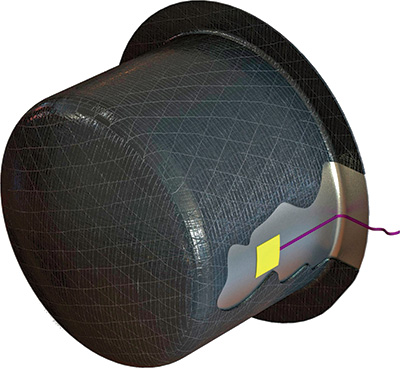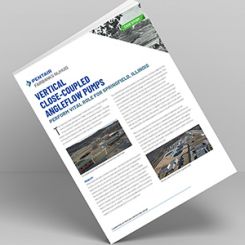Magnetic drive and canned motor pumps are two types of sealless pumps. The difference between them is how energy is transferred to the impeller. A magnetic (mag) drive works on the principle of attraction and repulsion of two permanent magnets. A canned motor is an electric motor in which the rotor winding is encapsulated and is immersed in liquid. The rotor shaft has the impeller at its end. In the past, canned motor pumps had some features that made them technologically more developed than mag drive pumps. In recent years, advances in magnetic materials and research and development have allowed some mag drive pumps to overcome the deficiencies that made them inferior to canned motor pumps.
Footprint
Canned motor pumps are compact, because the rotor—the motor rotor winding—and the impeller are one piece. Mag drive pumps can be either long coupled, with an elastic coupling between the motor and the pump, or close coupled, with the motor directly fitted to the pump support. When using close-coupled versions, mag drive pumps are also compact. When using close-coupled version of mag drive pumps, their footprint is smaller, being as compact as canned motor pumps. API 685, 2nd Edition, allows the possibility of installing close-coupled versions, when this was not possible in the 1st edition.
Duty Point
Canned motor pumps are dedicated to a duty point only. If end users need to alter duty conditions (flow, head, specific gravity or viscosity of the liquid), they may find that they cannot use the original canned motor pump because the power may be insufficient for the new specifications. A new pump may be required. Mag drive pumps use standard motors (IEC or NEMA) and if the duty point changes, the same pump can be used with minor modifications.
Wear Control
Canned motor pumps require strict control of bearing wear. If the bearings wear, uncontrolled failure can be catastrophic because it includes the mechanical parts of the pumps and the electric rotor winding, which makes maintenance difficult. Mag drive pumps do not require such strict control and are maintenance friendly.
Heat Dissipation
Traditionally, canned motor pumps have been considered more efficient than mag drive pumps. In many instances with generic mag drive pumps, this may be true. However, a recently developed and patented mag drive pump includes a hybrid technology rear casing that reduces magnetic losses, increasing efficiency.
 Table 1. Heat generating sources
Table 1. Heat generating sourcesCanned motor and magnetic drive pumps use a rear casing to separate the pumped liquid from the atmosphere. This rear casing produces eddy currents that generate heat, which is absorbed by the liquid. This—in the case of high vapor pressure liquids, such as solvents—can lead to liquid flashing and premature failure. One specific type of application, refrigerants, should never have heat added. Canned motors are not a good solution for moving refrigerants. When using a canned motor, heat remains even after the motor stops because the rotor winding takes time to cool. This cooling time is not necessary with mag drive pumps.
Efficiency
Power transmission in a canned motor pump is effectively the same as any standard electric motor. Earlier versions of mag drive pumps had high magnetic losses because of a gap between the inner magnet and the external magnet where the rear casing is located. The material and thickness of the rear casing wall will determine the amount of magnetic losses. The patented hybrid technology reduces magnetic losses up to 75 percent.
 First pump range hybrid technology rear casing with incorporated temperature sensor
First pump range hybrid technology rear casing with incorporated temperature sensorMaintenance
Mag drive pumps use standard motors—ATEX, explosion proof and NEMA—while canned motor pumps require dedicated motors. This means that in the event of a repair, most canned motor pumps must be sent to the manufacturer or a special approved repair shop for overhauling, which can lead to downtime. Most mag drive pumps can be easily repaired onsite. The patented mag drive sealless pumps can handle most applications. The pumps can be:
- Centrifugal pumps according to ISO, ANSI and API 685
- Peripheral turbine pumps
- Side channel pumps
- Sliding vane pumps
- Hollow disc pumps
- Screw pumps

